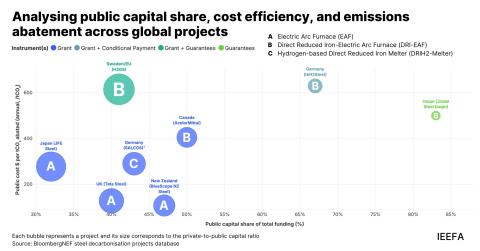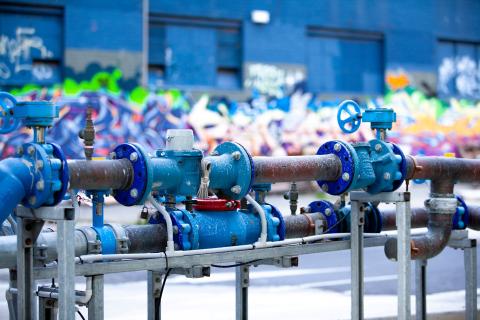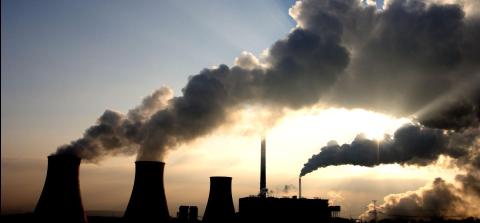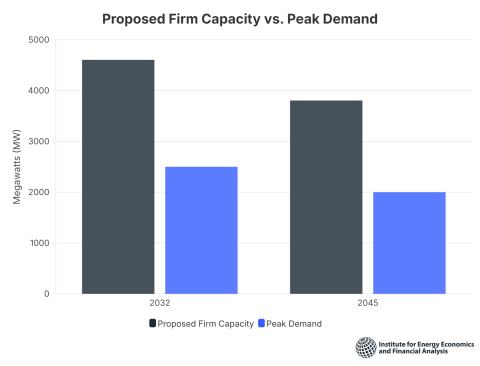
Key Findings
Large, diversified miners will not avoid growing investor pressure to act on their Scope 3 emissions that dwarf their Scope 1 and 2 impact.
Emissions from downstream steelmaking dominate most diversified miners’ Scope 3 emissions. However, it is becoming increasingly clear that the steel technology transition away from coal is accelerating.
BHP and Rio Tinto do not have a measurable Scope 3 emissions target. Vale’s target is inadequate while Fortescue clearly leads in Scope 3 emissions reduction ambition.
Investors will increasingly expect diversified miners to have responsible, as well as measurable and meaningful, Scope 3 emissions targets. That includes responsible managing down of coal mines rather than sales or spin-offs.
Executive Summary
BHP and Rio Tinto can expect to face growing investor pressure on their Scope 3 greenhouse gas (GHG) emissions. Neither company has a measurable Scope 3 emissions reduction target.
While Scope 1 and 2 emissions occur as companies carry out their operations, Scope 3 emissions result from customers using a company’s products, or from suppliers making products that a company uses. Due to the highly emissions-intensive nature of blast furnace-based steelmaking, large, diversified miners that produce iron ore and metallurgical coal have high Scope 3 emissions that dwarf their Scope 1 and 2 emissions.
In July 2023, Sultan Al Jaber – president of COP28 and chief executive of the Abu Dhabi National Oil Company (Adnoc) – stated that companies must act to reduce all greenhouse gas emissions, including Scopes 1, 2 and 3.
All the companies covered in this report have a goal to reach net zero emissions by 2050 as well as measurable, shorter-term emissions reduction targets although some companies do not include their Scope 3 emissions in their goals and targets, only Scopes 1 and 2.
All the companies covered in this report have a goal to reach net zero emissions by 2050 as well as measurable, shorter-term emissions reduction targets although some companies do not include their Scope 3 emissions in their goals and targets, only Scopes 1 and 2. Longer-term net zero emissions goals are different from measurable targets. BHP has defined the difference between emissions “targets” and “goals” as follows:
Target: “An intended outcome in relation to which we have identified one or more pathways for delivery of that outcome, subject to certain assumptions or conditions.”
Goal: “An ambition to seek an outcome for which there is no current pathway(s), but for which efforts will be pursued towards addressing that challenge, subject to certain assumptions or conditions.”
Table 1: Major Steel Supply Chain Miners’ Scope 3 Emissions Targets
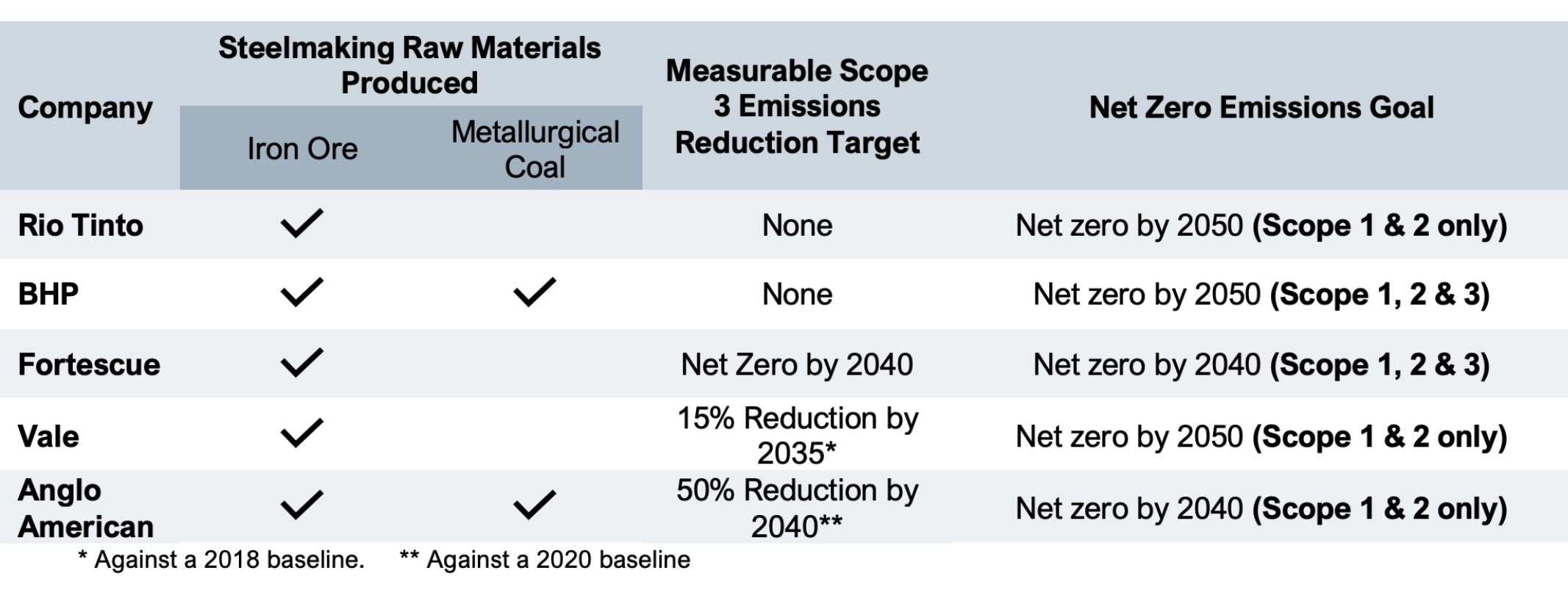
Source: Company disclosures.
This report examines the Scope 3 emissions targets, 2050 goals and approaches of five large, diversified mining companies amid the accelerating steel technology transition. IEEFA finds that some of these iron ore producers have not yet adopted targets for their Scope 3 emissions in line with investors’ increasing expectations:
- BHP and Rio Tinto have no measurable Scope emissions reduction targets despite the accelerating pace of the steel technology transition.
- Vale’s Scope 3 emissions target will appear inadequate to many investors.
- Fortescue clearly leads in ambition, targeting net zero Scope 3 emissions by 2040.
- Rio Tinto, Vale and Anglo American do not include Scope 3 emissions in their 2050 net zero emissions goals.
Investor pressure on Scope 3 emissions is growing. Recently, companies including TotalEnergies, Woodside, Glencore, ExxonMobil and Chevron have been pressured by investors to do more on their Scope 3 emissions. This investor pushback in 2023 is only an indication of what is to come. Going forward, investors will increasingly expect action on companies’ Scope 3 emissions and will demand measurable targets so they can judge company performance on reduction efforts.
Climate Action 100+, a collective engagement initiative backed by 700 global investors responsible for more than US$68 trillion in assets under management, released its Net Zero Standard for Diversified Mining in August 2023. Four of the five companies covered in this report are included in the list of focus companies: Anglo American, BHP, Rio Tinto and Vale. The standard includes the expectation that companies have 1.5°C-aligned short, medium- and long-term Scope 3 emissions targets for their metallurgical coal activities and a Scope 3 emissions reduction target aligned with a 1.5°C pathway for their iron ore activities.
Commonwealth Bank of Australia’s new lending rules for corporate finance, trade finance and bond facilitation require any existing customers who derive more than 15% of their revenue from the sale of oil, gas or metallurgical coal to have transition plans from 2025 that cover their Scope 1, 2 and 3 emissions. This is the first time the bank has specified that Scope 3 emissions must be covered.
Diversified miners often describe the steel industry as “hard-to-abate”, proffering this as a reason for such little action on their iron ore and metallurgical coal Scope 3 emissions in the past. However, it is becoming increasingly clear that the steel technology transition away from coal is accelerating. Fatih Birol, Executive Director of the International Energy Agency (IEA), stated in an April 2023 column for the Financial Times that: “The project pipeline for producing steel with hydrogen rather than coal is expanding rapidly. If currently announced projects come to fruition, we could already have more than half of what we need in 2030 for the IEA’s net zero pathway.”
Funding and final investment decisions are now being made for direct reduced iron (DRI) installations that don’t use coal, at commercial scale. In September 2023, H2 Green Steel announced it had completed a €1.5 billion equity raising to finance the world’s first industrial-scale DRI-based green steel plant utilising green hydrogen. The plant is planned to be operational from 2025.
In August 2023, BlueScope CEO Mark Vassella admitted that steel emissions reduction momentum is moving faster than he predicted just two years ago: “The technology is moving faster than we might have expected.”
Technology transitions tend to be non-linear, and have a habit of happening faster than expected. With alternatives to coal-based steelmaking now clear and receiving investment at industrial scale, there is no longer an excuse for suppliers of raw materials to the steel industry not to have a measurable Scope 3 emissions reduction target.
Rio Tinto
Investors will be keen for Rio Tinto to avoid any further environmental, social and governance (ESG) entanglements at its Simandou iron ore project in Guinea as the project moves towards construction. However, the high-quality iron ore output of the project will further enable the company to supply low-carbon DRI-based steelmaking operations and reduce its Scope 3 emissions. The Simandou project is becoming more valuable to Rio now that the steel technology transition away from coal is accelerating.
In addition, Rio has recently stepped-up efforts to investigate the use of its Pilbara iron ore in DRI-based steelmaking as its June 2023 agreement with China Baowu attests. The company’s own analysis finds that its iron ore-related Scope 3 emissions could drop 44% by 2035. Given all of this, investors will increasingly see that Rio Tinto is running out of reasons not to have a measurable Scope 3 emissions reduction target.
BHP
Now that BHP has joined Rio Tinto and Fortescue in examining steelmaking technology that can use Pilbara iron ore without metallurgical coal, the company has even less excuse not to have a measurable Scope 3 emissions target given the increasing speed of the global steel technology transition. BHP has noted that its transition risk increased during FY2023 due to growing societal expectations for decarbonisation by companies.
However, BHP is also backing carbon capture, utilisation and storage (CCUS) and states that its metallurgical coal mine portfolio has a strong future. The company’s focus on CCUS – a technology that will increasingly be left behind by non-coal-based steelmaking technology – risks making BHP look like a technology and emissions laggard. An increasingly unlikely role for CCUS will see coal’s role in steelmaking progressively supplanted by non-fossil alternatives, with green hydrogen leading the race. It won’t happen in the short or medium term, but the clock is already ticking for metallurgical coal.
BHP received plaudits for its plan to manage down its Mt Arthur thermal coal mine and close it in 2030 rather than selling it to the highest bidder. In future, investors will increasingly expect BHP to set a responsible, as well as measurable, Scope 3 target, that includes committing to managing down its existing metallurgical coal mines rather than selling them as it has begun to do with some of its operations.
Fortescue
Fortescue’s Scope 3 emissions target clearly leads its peers for ambition despite it producing lower iron content ore on average than Vale, BHP, Rio Tinto and Anglo American.
Part of Fortescue’s future involves the mining of magnetite iron ore in addition to hematite. Magnetite is easier to beneficiate to direct reduction-grade (DR-grade) for use in DRI-based steelmaking. Fortescue is already producing and shipping magnetite from its Iron Bridge mine containing more than 67% Fe, which meets DR-grade. Iron Bridge may only be the first of Fortescue’s magnetite developments, which could increase the supply of DR-grade ore it produces for low-carbon steelmaking, helping it achieve its Scope 3 emissions target. In August 2023, new Fortescue Metals CEO Dino Otranto stated: “Iron Bridge is a premium grade magnetite product, not only broadening our portfolio of products and providing diversification opportunities, but is also critically important
in the energy transition to make green iron.”
With its net zero Scope 3 by 2040 target in place, investors will now be keen to see more detail on how Fortescue intends to meet it. Fortescue’s new FY2023 Climate Change Report states: “We also have separate targets to eliminate emissions from our marine vessels by 2030 and achieve Net Zero Scope 3 emissions by 2040. We are presently developing our plans to meet these targets.”
Vale
Vale’s use of 2018 as the base year for its 2035 Scope 3 emissions target will appear unimpressive to many investors. By using the year before the Brumadinho tailings dam disaster – which led to a significant drop in iron ore production – as the base year, Vale virtually reached its 2035 target to reduce Scope 3 emissions by 15% target in 2022, highlighting how unambitious it is.
As the world’s leading producer of high-grade iron ore, Vale should be leading the iron ore majors on Scope 3 emissions. Investors will increasingly expect meaningful Scope 3 emissions reductions targets and to see more ambition upon Vale’s next review of its target in 2025, by which time the acceleration in the steel technology transition will be even more apparent.
Anglo American
Anglo American’s target to reduce Scope 3 emissions by 50% by 2040 likely reflects its higher-quality iron ore and hence its positive outlook for DR-grade iron ore demand in the future. It also probably informs its view that there is an approaching end date for the company’s metallurgical coal mining operations. However, investors are likely to become increasingly unimpressed with divestment as tool to reduce company Scope 3. Going forward, more investors will look for Anglo to manage down its metallurgical coal mine capacity, rather than offloading it as it did with its thermal coal mines.











